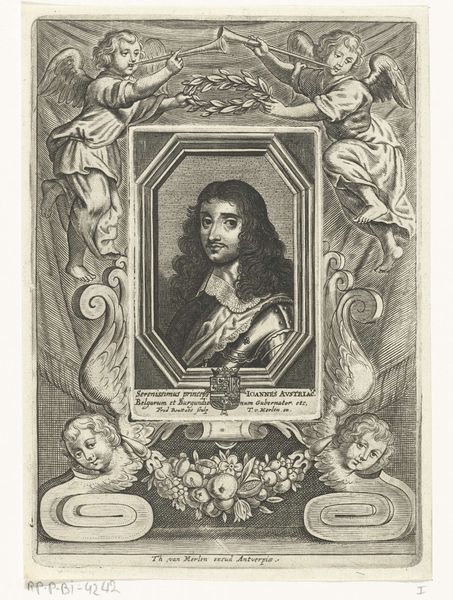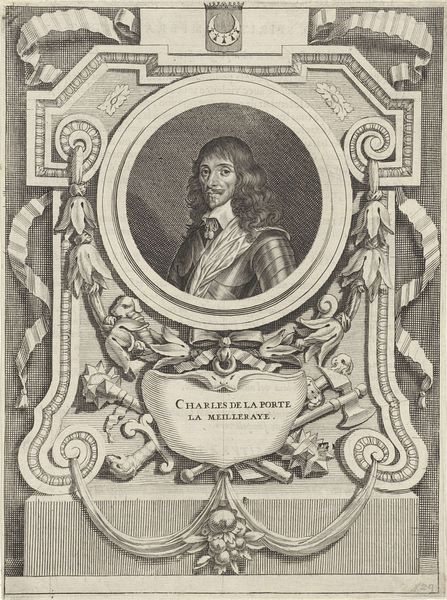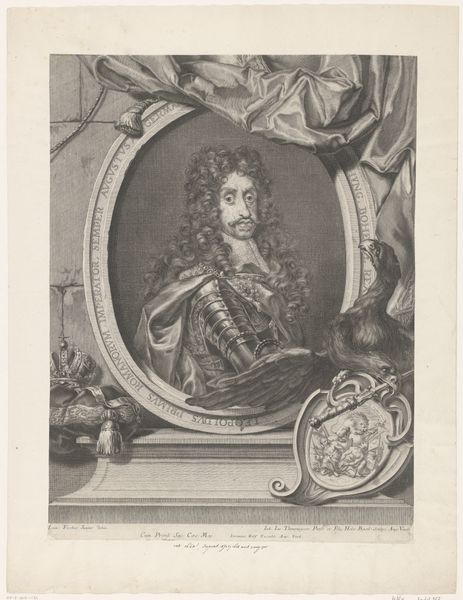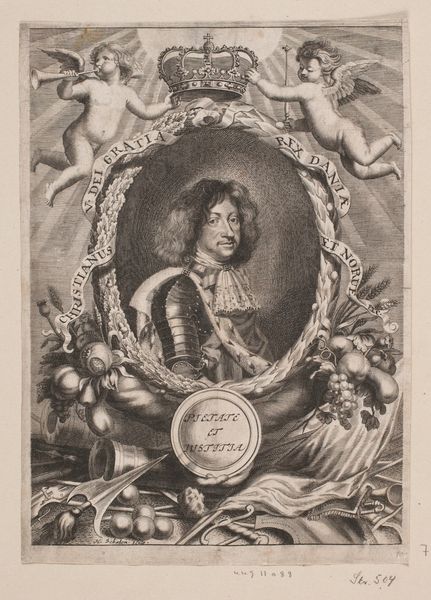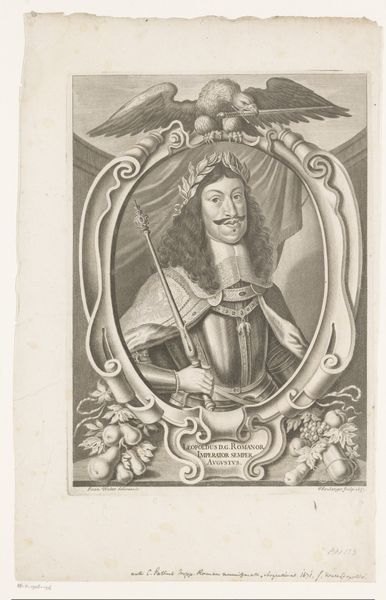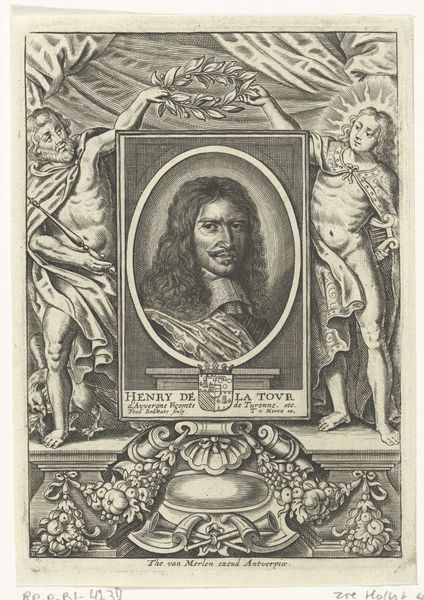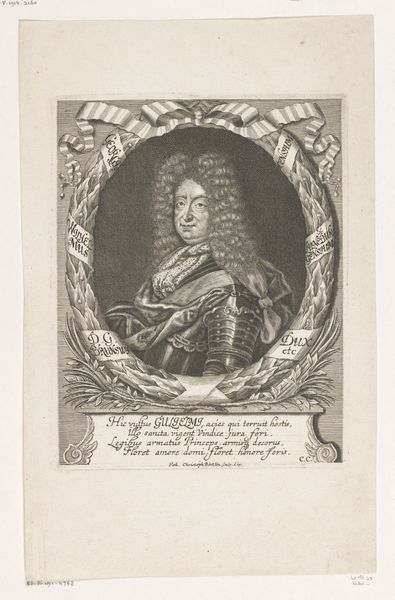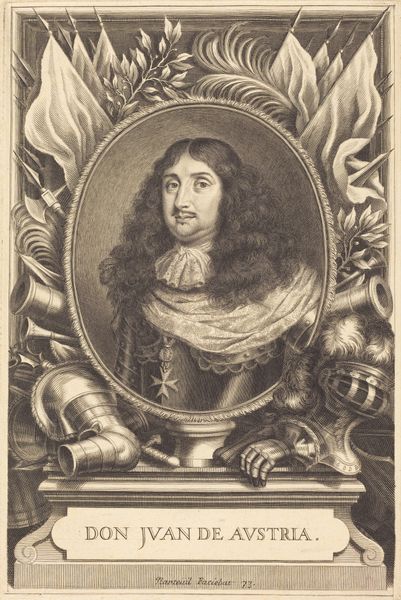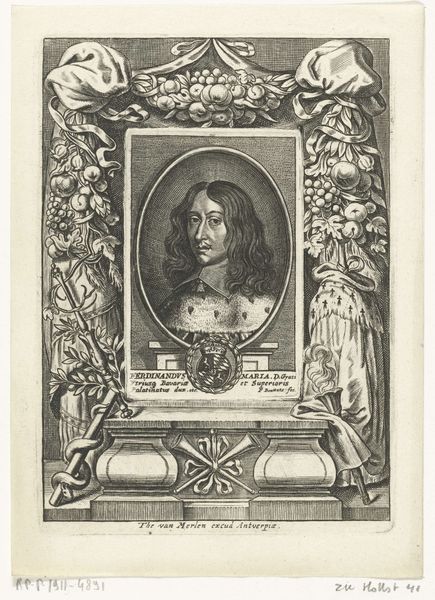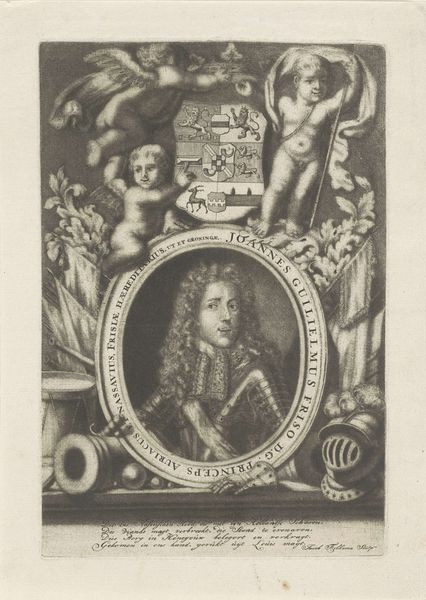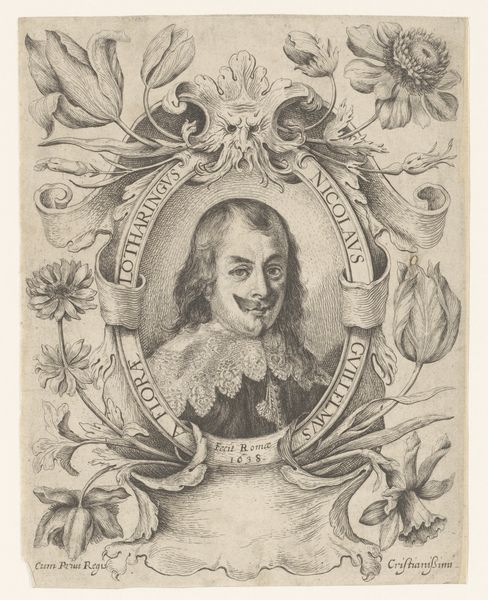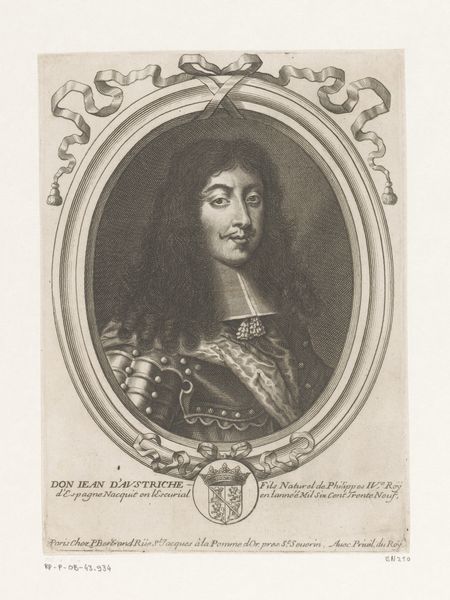
engraving
#
portrait
#
baroque
#
pen illustration
#
old engraving style
#
caricature
#
pen-ink sketch
#
line
#
history-painting
#
engraving
Dimensions: height 165 mm, width 117 mm, height 88 mm, width 57 mm
Copyright: Rijks Museum: Open Domain
Curator: Immediately, I notice a sense of controlled grandeur, almost as if this is a theatrical presentation of power and nobility, set within a highly ornamented proscenium arch. Editor: Indeed. This engraving, attributed to Frederik Bouttats and created sometime between 1656 and 1676, presents a portrait of Don Juan II of Austria. The print showcases Baroque sensibilities, with its elaborate detailing, allegorical figures and classical framing. Curator: Tell me more about this Don Juan. Was he as captivating in person as he appears in this idealized portrayal? Editor: Historically, Don Juan II was a significant figure in the Spanish Habsburg monarchy, serving as a military leader and governor. It's crucial to remember that such portraits weren't simply about likeness; they were powerful tools of propaganda. Bouttats probably never met him. The figure, the inscription, and the publisher would collaborate and draw inspiration from secondary works. Curator: Ah, right, this isn’t necessarily a reflection of reality, but more a constructed image, perpetuating a certain persona. The surrounding cherubs holding laurel wreaths add to this feeling of contrived admiration. They are so reminiscent of the baroque. Editor: Precisely. These elements reinforced the subject’s status. Think of those cherubs within the context of the power dynamics of the period— their placement suggests a divine right to rule, a prevalent ideology used to legitimize power structures. This image can spark discussions about how such artistic representation contributed to those beliefs, shaping popular perceptions of leaders, gender, and racial categories, too. How can we unpack such encoded information today, given what we know about inequality and its historical underpinnings? Curator: That makes me consider its reception then and now. Someone in the 17th century might have viewed it simply as a tribute, whereas now we question the implicit ideologies. It highlights art's role as a vessel of its time. Editor: Yes, analyzing the art through this lens invites consideration of the social impact imagery can produce and the function it serves for the classes who can access them. Ultimately, studying pieces like this allows us to see how intertwined art, identity, and political agendas truly are.
Comments
No comments
Be the first to comment and join the conversation on the ultimate creative platform.
